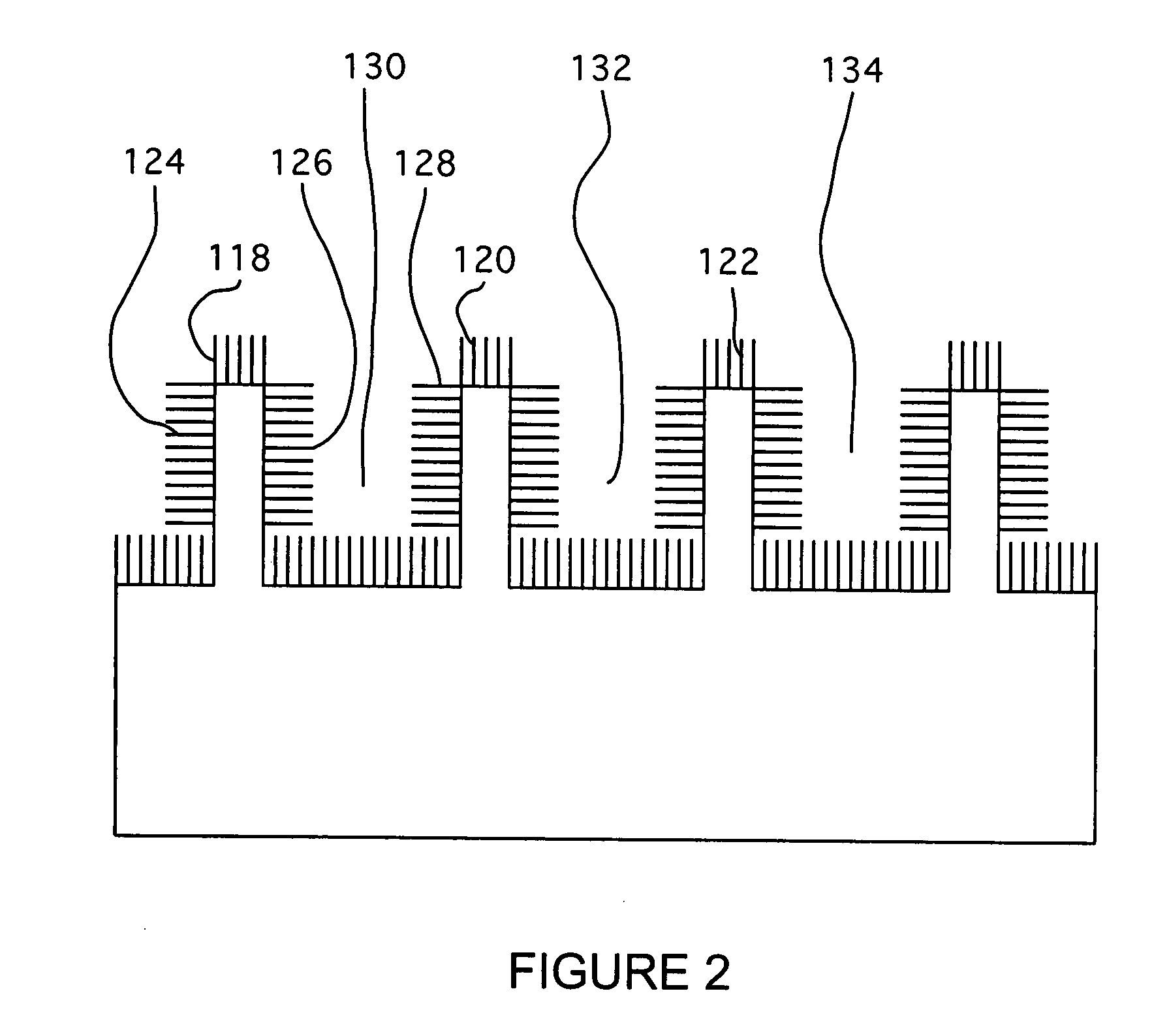Heat spreader with high heat flux and high thermal conductivity
a heat spreader and heat flux technology, applied in the field of high heat flux cooling technology for microelectronic systems, can solve the problems of low thermal mass of composite structures, ineffective heat conductors, and high cost of electronics design, and inducing thermal stress
- Summary
- Abstract
- Description
- Claims
- Application Information
AI Technical Summary
Benefits of technology
Problems solved by technology
Method used
Image
Examples
Embodiment Construction
[0025]FIG. 1 is a perspective view depicting a heat spreader constructed according to this invention. The heat spreader 100 transfers heat from a heat source, such as the microelectronic circuit components 102, 104, 106, 108, 110, and 112, to a heat sink 114, using a phase change coolant, which is contained, in both vapor and liquid forms, in a cavity 116.
[0026]As depicted by FIG. 2, which is a cross sectional enlarged view of a portion of the heat spreader 100, and by FIG. 3, which is a plan view of the portion of the heat spreader shown in FIG. 2, surrounding the cavity 116 of the heat spreader, which is the primary location for flow of the coolant in vapor form, multiple microporous wicks, such as, for example, the wicks 118, 120, and 122, and the wicks 124, 126, and 128, support flows of the coolant in the liquid phase, via capillary action, from the heat sink to the source.
[0027]In addition, the cavity includes multiple macroporous wicks, such as, for example, the wicks 130, 13...
PUM
 Login to View More
Login to View More Abstract
Description
Claims
Application Information
 Login to View More
Login to View More - R&D
- Intellectual Property
- Life Sciences
- Materials
- Tech Scout
- Unparalleled Data Quality
- Higher Quality Content
- 60% Fewer Hallucinations
Browse by: Latest US Patents, China's latest patents, Technical Efficacy Thesaurus, Application Domain, Technology Topic, Popular Technical Reports.
© 2025 PatSnap. All rights reserved.Legal|Privacy policy|Modern Slavery Act Transparency Statement|Sitemap|About US| Contact US: help@patsnap.com



